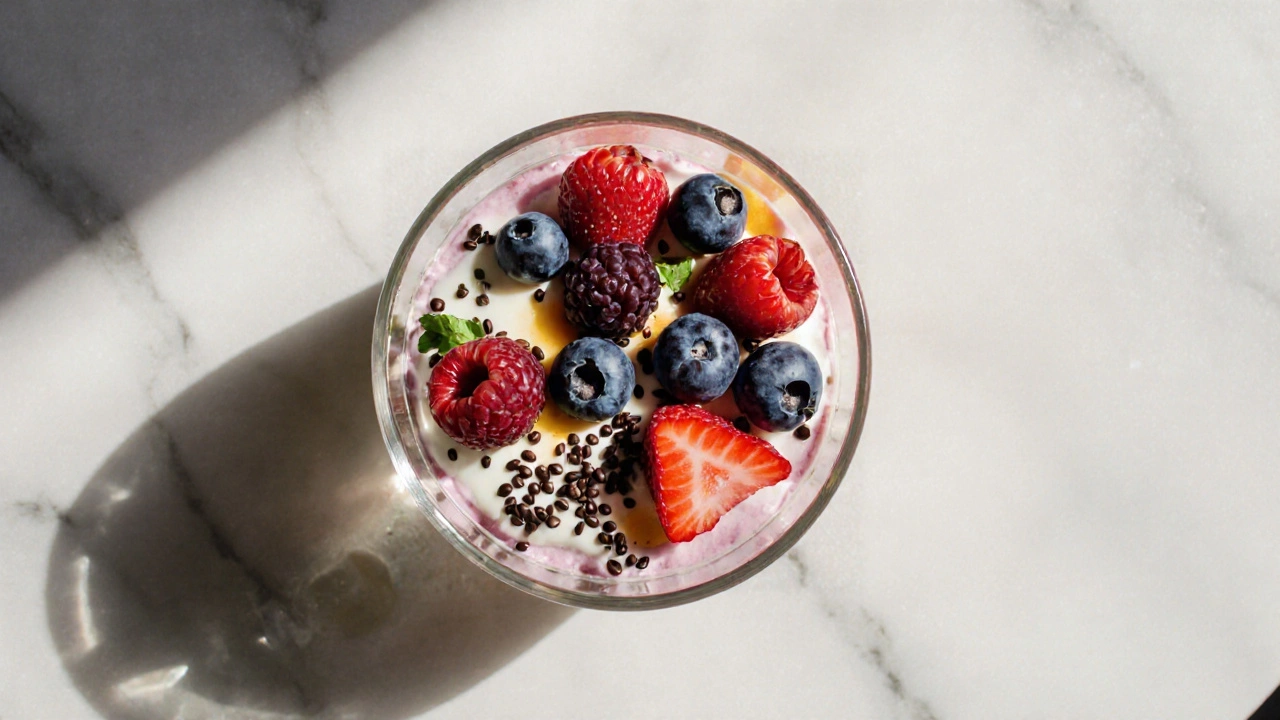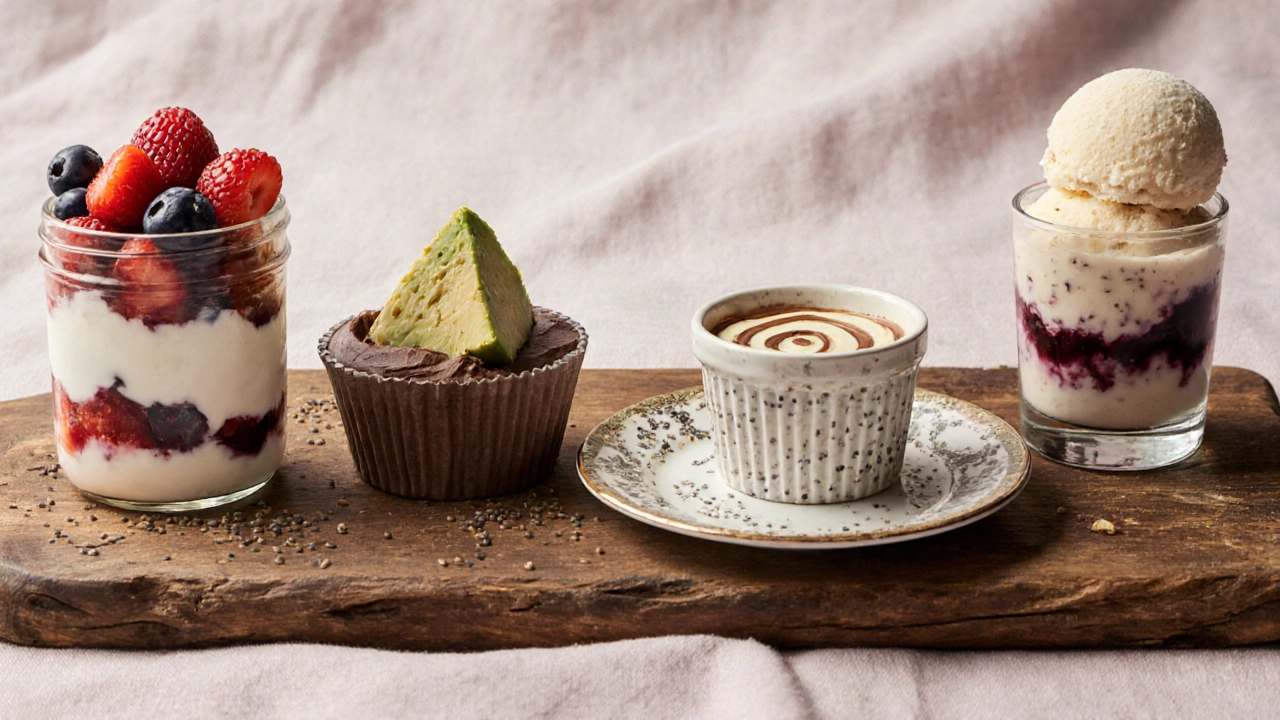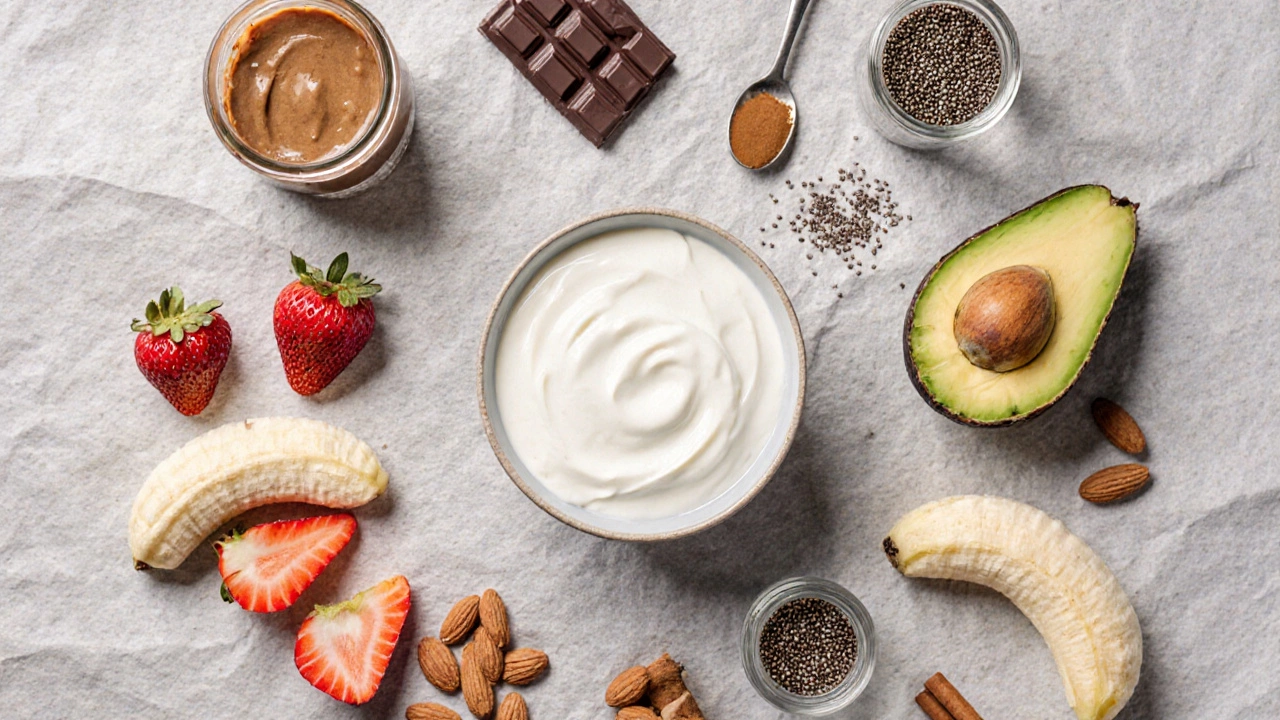
Dessert Nutrition Calculator
Calculate Your Healthy Dessert
When you hear the phrase healthiest dessert, you probably picture a tiny bowl of fruit rather than a decadent slice of cake. But the truth is you can still satisfy a sweet tooth while keeping nutrition front‑and‑center. Below is a practical guide that tells you exactly what to look for, which desserts actually earn the title, and how to build your own versions at home.
Quick Takeaways
- Focus on low‑calorie, low‑sugar options that pack protein, fiber, or healthy fats.
- Fruit, nuts, Greek yogurt, avocado, and dark chocolate consistently top the health ranking.
- Natural sweeteners such as stevia or monk fruit let you cut added sugar without sacrificing taste.
- Portion control and mindful ingredient combos are the secret weapons.
- Use the comparison table to pick a ready‑made dessert or to inspire a custom recipe.
What Makes a Dessert "Healthy"?
Health isn’t a one‑size‑fits‑all label, but for sweets a few measurable factors help separate the truly nutritious from the gimmicky.
Sugar is a simple carbohydrate that spikes blood glucose and adds empty calories. When evaluating a dessert, check the total sugar amount per serving and whether the sweetness comes from natural sources (fruit, honey, or low‑glycemic sweeteners) rather than refined white sugar.
Calorie content tells you how much energy you’ll consume in one bite. Low‑calorie desserts (under 150kcal per typical serving) are easier to fit into daily goals without feeling deprived.
Beyond sugar and calories, look for nutrients that add value:
- Protein: helps keep you full longer; Greek yogurt and nut butters are prime sources.
- Fiber: slows sugar absorption; fruits, oats, and seeds deliver it.
- Healthy fats: support brain health; avocado, nuts, and dark chocolate provide mono‑ and poly‑unsaturated fats.
- Antioxidants: protect cells; cacao, berries, and certain spices (cinnamon, ginger) are rich in them.
When a dessert checks most of these boxes, it earns a spot in the "healthiest" league.

Top 5 Healthiest Desserts on the Planet
These five sweet treats consistently score high across the criteria above. The numbers are based on typical recipes from reputable nutrition databases (USDA, European Food Information Council) and real‑world testing.
| Dessert | Calories (per 100g) | Sugar (g) | Protein (g) | Fiber (g) | Key Healthy Ingredients |
|---|---|---|---|---|---|
| Greek Yogurt & Berry Parfait | 95 | 7 | 8 | 3 | Greek yogurt, mixed berries, chia seeds |
| Avocado Dark‑Chocolate Mousse | 130 | 6 | 3 | 5 | Avocado, 70% cocoa, stevia |
| Almond‑Flour Lemon Cake (single slice) | 140 | 5 | 4 | 4 | Almond flour, lemon zest, erythritol |
| Chia‑Seed Pudding with Coconut Milk | 110 | 4 | 2 | 10 | Chia seeds, unsweetened coconut milk, vanilla |
| Frozen Banana‑Berry Ice Cream | 120 | 8 | 2 | 3 | Bananas, frozen berries, a splash of almond milk |
Why these desserts shine:
- They keep calories modest while delivering a satisfying mouthfeel.
- Sugar comes from whole fruit or low‑glycemic sweeteners like stevia, erythritol, or monk fruit.
- Each includes at least one nutrient‑dense component-protein‑rich Greek yogurt, fiber‑packed chia, or antioxidant‑rich dark chocolate.
How to Build Your Own Healthiest Dessert
Even if you love experimenting, start with three building blocks: base, sweetener, and booster.
Fruit provides natural sweetness, vitamins, and fiber. Choose berries, apples, or tropical fruits depending on seasonal availability.
Natural sweetener such as stevia, monk fruit, or a drizzle of raw honey lets you control added sugar. Remember that honey still adds calories, so use it sparingly.
Nuts or nut butters contribute healthy fats, protein, and crunch. Almond flour, peanut butter, or crushed pistachios work well in both baked and no‑bake desserts.
Follow these steps to assemble a balanced sweet treat:
- Pick a base that’s low in calories-Greek yogurt, cottage cheese, or a blended fruit puree.
- Add a sweetener to taste. Start with a pinch of stevia or ¼tsp of honey and adjust.
- Stir in a booster for texture and nutrition-chia seeds (overnight gel), a spoonful of nut butter, or a few squares of 70% dark chocolate.
- Top with a sprinkle of spice (cinnamon, nutmeg) or a few fresh berries for visual appeal.
- Chill for 15‑30minutes if you prefer a firmer bite, then enjoy.
This formula works for everything from a quick parfait to a layered mousse.

Common Pitfalls and How to Avoid Them
Even health‑focused desserts can slip into the junk‑food zone. Keep an eye on these traps:
- Hidden sugars: Check ingredient lists for "sugar," "syrup," "fruit juice concentrate," or "maltodextrin." Replace them with whole fruit or approved low‑glycemic alternatives.
- Portion creep: A bowl may look small, but once you start scooping it can double. Measure servings with a kitchen scale or scoop.
- Over‑processing: Blending nuts into a paste can add calories quickly. Use measured amounts and consider bulk‑up ingredients like air‑whipped yogurt.
- Skipping protein: Desserts without protein often lead to cravings soon after. Add a dollop of Greek yogurt, a spoonful of cottage cheese, or a sprinkle of hemp seeds.
Next Steps for Dessert Lovers
If you’re ready to level up your sweet game, try the following:
- Pick one dessert from the comparison table and make it at least twice this week.
- Swap refined sugar with a natural sweetener in any existing recipe you love.
- Track calories and sugar for a week using a free nutrition app; notice how your cravings change.
- Experiment with a custom combo-e.g., avocado mousse topped with chia‑seed crunch.
By blending taste with nutrition, you’ll discover that “healthy” doesn’t have to mean “boring.”
Frequently Asked Questions
Can I use regular sugar if I love its flavor?
You can, but keep the amount small-no more than 1‑2tsp per serving. Pair it with high‑fiber ingredients like oats or chia to blunt the blood‑sugar spike.
Is dark chocolate really healthy?
Cocoa solids above 70% contain antioxidants and less sugar. A 20‑gram serving gives about 120kcal and a boost of flavonoids, making it a smart choice in moderation.
What sweetener is best for baking?
Erythritol and monk fruit blends mimic sugar’s bulk while staying low‑calorie. They hold up well at 350°F (180°C) and don’t leave a bitter aftertaste.
How much fruit can I add without raising sugar too much?
Aim for ½cup of fresh or frozen fruit per serving. That usually adds 5‑7g of natural sugar, which is balanced by fiber and nutrients.
Do I need to count calories for a healthy dessert?
Counting helps you stay aware, especially if you’re managing weight. Keeping desserts under 150kcal per serving is a practical benchmark.